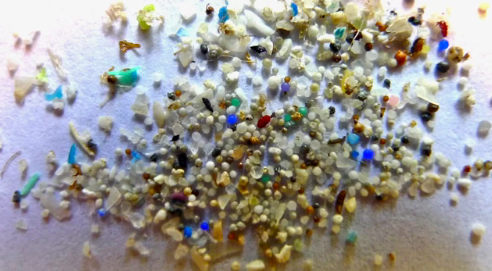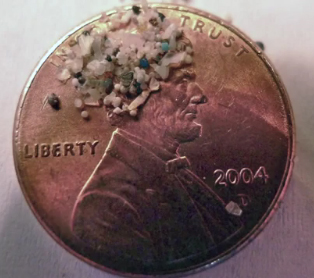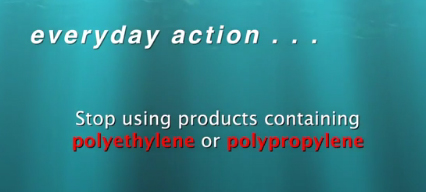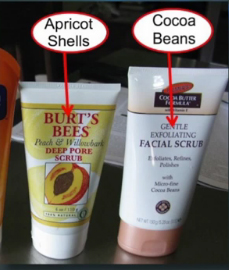
Update: “The Microbead Free Waters Act would start the phase-out of the tiny pieces of plastic found in soap, toothpaste and body washes beginning 1 July 2017.” ~ The Guardian, Dec 9 2015.
Well, let’s start with the basics:
What the heck is a micro-bead?
Microbeads are polyethylene microspheres that are widely used in cosmetics, skin care and personal care industries, as well as biomedical and health science research… In the cosmetics industry they are usually used as exfoliating agents. Sphericity and particle size uniformity create a ball-bearing effect in creams and lotions, resulting in a silky texture and spreadability… Plastic particle water pollution by microplastics including plastic microbeads has become a substantial environmental concern.

Why should we care?
Essentially, these millions of minuscule plastic beads are washing down our drains and into our oceans. Not only does the plastic get consumed by sea-life (which is extremely dangerous and detrimental for those animals), but additionally plastic has the potential to absorb and retain chemicals and pesticides from the environment. That means when fish, or other consumable sea life, ingest these beads they also ingest the toxic chemicals retained by the beads. Therefore, the seafood we consume can be polluted with harmful toxins.
Please take 3 and a half minutes, to watch this simple, informative video, presented by ThankYouOcean.org
So what can we do?
Make a point to check labels for polyethylene or polypropylene microbeads, and avoid those products. And as discussed in the video above, seek out products that utilize alternatives for exfoliation, instead of using microbeads.


Want an option to make this really simple? There’s an app for that!
The “Beat the Microbead” App allows you to check if a product contains microbeads by simply scanning bar-codes with your smart-phone camera.
Easy-peasy-lemon-squeezy!
Additionally, if you have partially used products at home that contain polyethylene or polypropylene microbeads, and you want to stop using them immediately, there is an alternative to simply throwing them in the trash.
Send any products with microbeads to 5 Gyres (address in the video above). The microbeads from these products will be used to help bring awareness to this important issue.
Just do what you can—every little bit helps!
Love elephant and want to go steady?
Sign up for our (curated) daily and weekly newsletters!
Editor: Renée Picard
Photos: Video screen-shots


Read 2 comments and reply